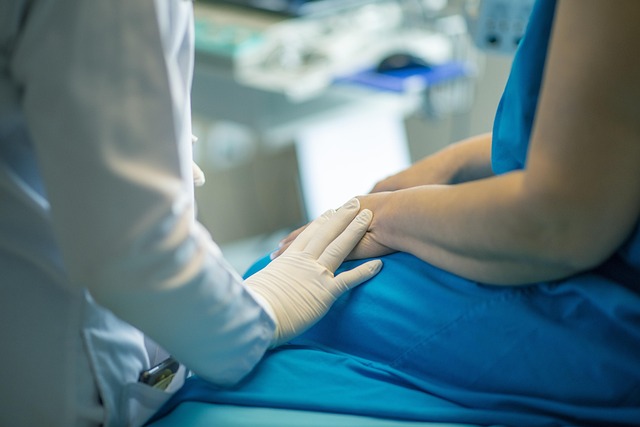Anti-Aging Treatment – A List of Large Scope Popular Treatments 555


Anti-Aging Treatments: A Comprehensive Guide to Popular Therapies 555
The pursuit of anti-aging treatments is a timeless endeavor, dating back to ancient civilizations where people sought to extend their youth and vitality through natural remedies, dietary practices, and lifestyle changes. From the olive-based potions of ancient Egypt to the holistic practices of Ayurveda in India and traditional Chinese medicine, the quest for longevity has evolved into a sophisticated field supported by scientific research and technological advancements.
Today, the landscape of anti-aging treatments is vast, encompassing a wide range of therapies, medications, and lifestyle interventions designed to slow, prevent, or reverse the effects of aging. This article delves into the most popular and scientifically-backed anti-aging treatments available today, highlighting their benefits, mechanisms of action, and potential risks.
1. Caloric Restriction Mimetics (CRMs)
Caloric restriction has long been associated with increased lifespan and improved health outcomes. However, maintaining a low-calorie diet over the long term is challenging for many. Caloric restriction mimetics (CRMs) offer a solution by mimicking the effects of caloric restriction without the need to reduce food intake drastically.
CRMs work by influencing cellular pathways involved in cell repair and apoptosis (programmed cell death). One of the most well-known CRMs is resveratrol, a compound found in red wine, which activates the sirtuin pathway—a key regulator of cellular aging. Other CRMs include metformin, a common diabetes medication, and rapamycin, an immunosuppressant that has shown promise in extending lifespan in animal studies.
Potential Risks: While CRMs offer promising benefits, they are not without risks. Long-term use of these compounds may have side effects, and their effectiveness in humans is still under investigation.
2. Antiglycators
Glycation is a process in which sugars bind to proteins and lipids, leading to the formation of advanced glycation end products (AGEs). AGEs contribute to the aging process by damaging tissues, promoting inflammation, and impairing cellular function. Antiglycators are compounds that prevent or reduce glycation, thereby protecting the body from the harmful effects of AGEs.
One of the most potent antiglycators is carnosine, a dipeptide found in muscle tissue. Carnosine has been shown to improve cellular function, boost energy levels, and protect against oxidative stress. Other antiglycators include aminoguanidine, which inhibits the formation of AGEs, and tenilsetam, a nootropic that also has antiglycating properties.
Potential Risks: Excessive use of antiglycators, particularly in supplement form, may lead to side effects such as hyperactivity or gastrointestinal distress.
3. Antioxidants
Antioxidants are compounds that neutralize free radicals—unstable molecules that cause oxidative stress and damage to cells. Oxidative stress is a major contributor to the aging process, leading to cellular damage, inflammation, and the development of age-related diseases.
Common antioxidants include vitamins C and E, coenzyme Q10, and glutathione. These compounds are found in a variety of foods, such as berries, nuts, and leafy greens. Resveratrol, mentioned earlier as a CRM, is also a powerful antioxidant. By incorporating antioxidant-rich foods into your diet, you can protect your cells from damage and promote overall health and longevity.
Potential Risks: While antioxidants are generally safe, excessive supplementation can lead to imbalances and may interfere with certain medications.
4. Complementary Treatments
Complementary treatments involve the use of natural methods, such as herbal remedies and dietary interventions, to support health and slow the aging process. These treatments often draw on traditional practices and are some of the oldest forms of anti-aging therapy.
For example, Ayurvedic medicine uses herbs like ashwagandha and turmeric to promote vitality and reduce inflammation. Traditional Chinese medicine (TCM) employs herbs like ginseng and goji berries to boost energy and support immune function. These natural methods are typically safe and affordable, making them accessible to a wide range of people.
Potential Risks: While natural treatments are generally safe, it’s important to consult with a healthcare provider before starting any new regimen, especially if you are taking other medications.
5. Cosmetics and Cosmetic Surgery
Cosmetic treatments are among the most popular anti-aging interventions, focusing on the repair and enhancement of skin and body features affected by aging, accidents, or genetics. These treatments range from non-invasive procedures, such as collagen injections and botox, to more invasive surgeries like facelifts and breast augmentation.
Collagen treatments involve injecting collagen into the skin to restore its elasticity and reduce the appearance of wrinkles. Botox is another popular treatment that temporarily paralyzes muscles to smooth out wrinkles and fine lines. Isolagen is a technique that uses a patient’s own fibroblast cells to rejuvenate the skin.
For more extensive results, cosmetic surgery options include facelifts, rhinoplasty (nose reshaping), and liposuction. These procedures aim to revitalize the skin, improve facial contours, and enhance overall appearance, boosting self-esteem and quality of life.
Potential Risks: Cosmetic treatments, particularly surgical procedures, carry risks such as infection, scarring, and adverse reactions to anesthesia. It’s important to choose a qualified and experienced practitioner to minimize these risks.
6. Hormonal Treatments
As we age, the levels of certain hormones in the body, such as estrogen, testosterone, and growth hormone, decline. Hormonal treatments aim to restore these hormones to more youthful levels, thereby improving energy, muscle tone, and sexual function.
Bio-identical hormone replacement therapy (BHRT) uses hormones that are chemically identical to those produced by the body. BHRT is often used to alleviate symptoms of menopause in women, such as hot flashes and mood swings, and to improve vitality in men experiencing andropause (male menopause).
Human growth hormone (HGH) therapy is another hormonal treatment that has gained popularity for its purported anti-aging benefits. HGH therapy is believed to increase muscle mass, reduce body fat, and improve skin elasticity.
Potential Risks: Hormonal treatments can have serious side effects, including an increased risk of cancer, cardiovascular disease, and other health issues. It’s essential to undergo these treatments under the supervision of a qualified healthcare provider.
7. Advanced Therapies: Stem Cells, Immune Therapy, and Cell Therapy
Stem cell therapy is an emerging field in anti-aging medicine that involves the use of stem cells to regenerate damaged tissues and organs. Stem cells have the unique ability to develop into different types of cells, making them a powerful tool for repairing age-related damage.
Immune therapy focuses on enhancing the body’s immune system to fight off diseases and age-related decline. This can involve the use of immune-boosting supplements, vaccines, or therapies that target specific aspects of the immune response.
Cell therapy involves the transplantation of healthy cells into damaged tissues to restore function. This approach has shown promise in treating age-related conditions such as Parkinson’s disease, heart disease, and osteoarthritis.
Potential Risks: While these advanced therapies offer exciting possibilities, they are still in the experimental stages and may carry risks such as immune rejection, infection, and unintended side effects.
8. Lifestyle Changes and Alternatives
Lifestyle modifications are a cornerstone of anti-aging strategies. Adopting healthy habits can significantly slow the aging process and improve quality of life. Key lifestyle changes include:
- Maintaining a balanced diet rich in fruits, vegetables, whole grains, and lean proteins.
- Engaging in regular physical activity to promote cardiovascular health and maintain muscle mass.
- Managing stress through practices such as yoga, meditation, or mindfulness.
- Getting enough sleep to support overall health and well-being.
- Avoiding smoking and excessive alcohol consumption.
By incorporating these habits into your daily routine, you can enhance your body’s natural defenses against aging and reduce the risk of age-related diseases.
Potential Risks: While these lifestyle changes are generally safe, it’s important to make gradual adjustments to avoid burnout or injury.
Conclusion
Anti-aging treatments offer a wide range of options for those looking to preserve their youth and vitality. From dietary supplements and hormonal therapies to advanced stem cell treatments, there is something for everyone. However, it’s important to approach these treatments with caution and seek professional guidance to ensure their safety and effectiveness. By combining the right treatments with healthy lifestyle choices, you can enjoy a longer, healthier, and more youthful life.



